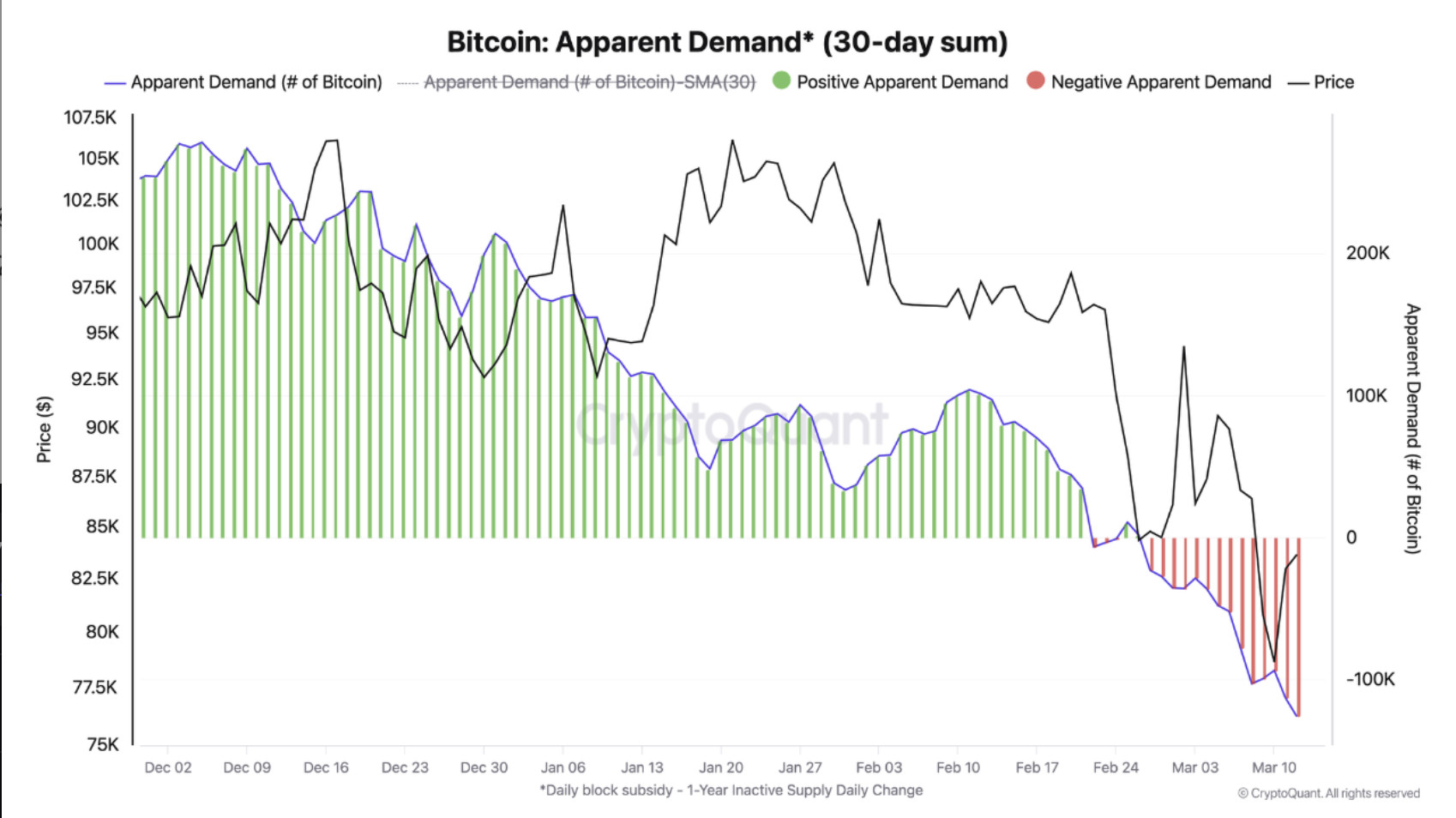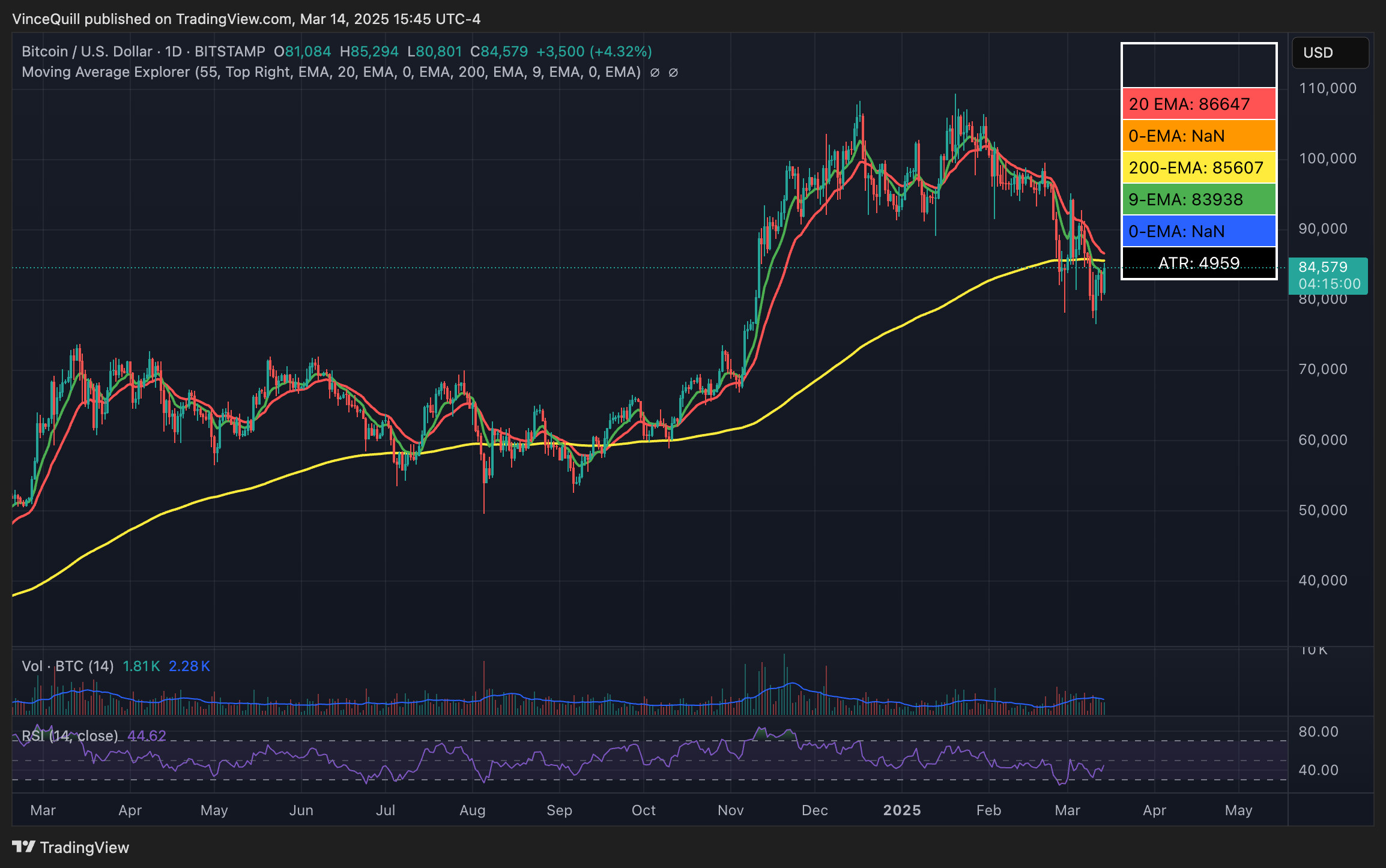Bitcoin Demand Plummets: What’s Behind the Market’s Latest Jitters?

The cryptocurrency world is no stranger to volatility, but even seasoned Bitcoin investors are treading cautiously as demand for BTC hits its lowest level in 2025. With macroeconomic uncertainty looming large, risk-averse traders are pulling back, sending Bitcoin’s apparent demand into negative territory.
Is this just another market cycle playing out, or are deeper forces at work? Let’s dive into the factors behind Bitcoin’s latest slump and what it could mean for the future of the crypto market.
Bitcoin Demand Turns Negative — A First in Months
Bitcoin’s apparent demand—a measure tracked by CryptoQuant—dropped to negative 142 on March 13, marking its lowest point since early 2024.
For months, demand for BTC had been riding high, maintaining positive momentum since September 2024 and peaking in December 2024. However, the tides have turned. Demand remained in positive territory until early March 2025 before taking a sudden and sharp dive.
Why the Sudden Drop?
The broader economic landscape is flashing warning signs, and traders are reacting accordingly. Some of the major concerns weighing on investor sentiment include:
- Geopolitical tensions and fears of a potential prolonged trade war.
- Stubborn inflation—while cooling, it still sits above the Federal Reserve’s 2% target.
- Flight to safer assets, with investors moving into cash and government bonds to avoid uncertainty.
Simply put, risk-on assets like Bitcoin are feeling the heat as traditional markets brace for potential downturns.
 Bitcoin Demand Drops CryptoQuant
Bitcoin Demand Drops CryptoQuant
Crypto Markets Bleed as Market Confidence Sinks
For many investors, the post-election buzz surrounding crypto regulations and institutional adoption is losing steam, replaced by a harsher economic reality.
Despite a lower-than-expected CPI inflation report on March 12, Bitcoin’s price dropped immediately afterward—a sign that traders are more concerned with broader market uncertainties than temporary inflationary relief.
Institutional Investors Are Cashing Out
Adding to the bearish mood, crypto ETFs have now seen four consecutive weeks of outflows, with institutional investors retreating en masse:
- Total crypto ETF outflows: $4.75 billion in the past four weeks.
- BTC investment withdrawals: $756 million just this month.
This exodus suggests big money is dialing down risk, shifting away from BTC as fears of an economic downturn grip the market.
Bitcoin’s Price Action: Bulls on Shaky Ground
Bitcoin’s price has slumped over 22%, falling from $109,000 in January to recent levels.
The Total3 Market Cap—which measures the overall crypto market cap excluding Bitcoin and Ethereum—has also plunged by over 27%, showing that the entire crypto ecosystem is under pressure.
 Bitcoin Price Drop TradingView
Bitcoin Price Drop TradingView
Key Technical Levels to Watch
- Bitcoin has been trading below its 200-day EMA since March 9, a bearish indicator.
- The Average True Range (ATR)—a measure of volatility—has surged past 5,035, signaling heavy price swings.
Crypto analyst Matthew Hyland believes that BTC must close at least $89,000 on the weekly chart to regain bullish momentum. If it fails, a deeper correction down to $69,000 could be on the horizon.
What’s Next for Bitcoin?
The coming weeks will be crucial as traders assess whether this sell-off is a temporary blip or a sign of more pain ahead. Key factors to watch include:
- Macroeconomic trends: Will inflation continue to cool, or will persistent fears keep investors on edge?
- Institutional moves: Will big players re-enter the market, or will ETF outflows continue?
- Technical signs: Can Bitcoin reclaim its key support levels, or is a larger breakdown coming?
While Bitcoin has faced countless pullbacks in its history, this time, the pressure is compounded by broader financial and geopolitical concerns. For now, traders are bracing for volatility.
📌 This article does not contain investment advice. Always do your own research before making any financial decisions.
🔎 Related Read: Bitcoin’s worst cycle ever? Maybe not, say analysts.

